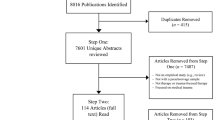Abstract
After war and armed conflicts, the child victims of these events need protection and reintegration. In reality, the physical and psychic consequences of wars on children persist for some time after the war. In this regard, we must prepare the reintegration of these children into society. To reintegrate these children, we must think of both a general course of rehabilitation followed by special rehabilitation according to the child’s needs. In this respect, initially, we must initiate psychosocial help to restore the psychological and social development of children and to mitigate the harmful effects of wars. We noted that the content of psychosocial assistance for the child victims of war depends primarily on their particular needs and cultures and their traditions. General rehabilitation must thus rest on the capacity of the children to overcome the difficult conditions in the aftermath of wars. In this regard, the communities, the families, the schools, the teachers and the children themselves must take part in the process of curing these children and their support. Here, we can use certain possible models of creative therapy. For example, the cultural media such as arts of interpretation and arts visual as well as the accounts of the children themselves, the creative word can decrease the psychological problems of the child victims of war and facilitate their rehabilitation in the community.
Similar content being viewed by others
References
Aziz, T. A. & Panos, V. (2000). Post traumatic stress disorder reactions in children of war: a longitudinal study,Child Abuse and Neglect, 4(2), 91–298.
Bezillede, H. (2002). The use of testimony in research in social sciences. In J. Feldman.Dilemmas, Ethics in practice of the social sciences. Isfahan:Harmattan.
Francoise, D. (2005).The combat for the child welfare gives a direction to our humanity. Paper presented at the conference of Children and Wars, Palace of Luxembourg, Luxembourg.
Federation for Mental Health. (2002).The faces of violence and the traumatisms. Retrieved March, 3, from www.wfmh.org/wmhday/wmhdfrench2002/sec1fvt_war. htm.
Joice, B. & Weil, M. (1996).Models of Teaching. MA: A Simon and Shuster Company.
Machel, G. (1996).Consequences of the wars on the projecting children. New York: UNICEF
Machel, G. (1996).Impact of the wars on the children. New York: the United Nations.
Machel, G., Salgado, S., Klot, J. F., Sowa, T. & UNICEF. (2001).The impact of war on children: A review of progress since the 1996 United Nations report on the impact of armed conflict on children. Vancouver: UBC Press.
Machel, G., & UNICEF. (1996).Impact of armed conflict on children. New York; United Nations.
Minou, T. (2005).The consequences of war on the education of children. Unpublished doctorial dissertation. University of Caen. France.
Naniwe, A. (1997).Can the account be therapeutic?The experiment of Burundi in Children war. Symposium conducted at international Centre of childhood and Family Program, Paris, France.
Nicolas, D. (1997).Workings of the traumatism: in Becoming,memory and traumatism. Symposium conducted at international Centre of childhood and Family Program, Paris, France.
UNICEF (1998)Cultural media to attack the problem of the children touched by the war, the models possible. Symposium conducted at the meeting of the Ministry for Foreign Affairs and the international Trade of Canada. Vancouver, Canada.
Yule, W., & R. Canterbury (1994). The treatment of post traumatic stress disorder in children and adolescents.International Review of Psychiatry 6(2–3), 141–151.
Author information
Authors and Affiliations
Corresponding author
Rights and permissions
About this article
Cite this article
Minou, T. The possible models of creative therapies for the child victims of war and armed conflicts. Asia Pacific Educ. Rev. 7, 229–235 (2006). https://doi.org/10.1007/BF03031546
Received:
Revised:
Accepted:
Issue Date:
DOI: https://doi.org/10.1007/BF03031546




